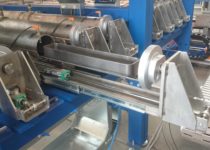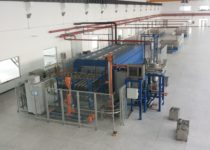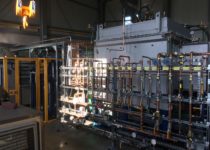Refractory Metal Powders
CREMER furnaces are also applied for the heat treatment of refractory metal powders. Such refractory metal powders, such as molybdenum, tungsten (refer to CARBIDE2500), cobalt and uranium oxide, can best be processed using powder metallurgy methods. They are produced in electric arc furnaces (not part of our product range) or chemically. Depending on the production method, the metal powder must often be reduced or otherwise thermally treated, whereby several process steps can be necessary. Therefore we offer several types of thermal process plants, which are optimally adapted to the thermal process concerned. In addition to the multi-tube furnaces and HT-pusher type sintering furnaces briefly described here, our rotary drum powder reduction furnace technology is also of interest for thermal treatments of refractory powders.
Multi-tube reduction furnaces (up to 1150 °C)
A multi-tube furnace for reducing is a good example of a thermal process plant type that is suitable for the heat treatment of refractory metal powder. In this case the material is filled into metallic boats, which are then pushed through the tubes. A high gas flow, that is recycled, ensures that no water condenses. In some cases, the charged boats are also pushed through the furnace in two layers. The boats are automatically filled and emptied. Such furnace plants are especially relevant for the production of molybdenum powder and tungsten powder. Up to 18 tubes in one furnace are possible.
HT-pusher type sintering furnace (1450 °C < T < 2500 °C)
A typical furnace for the further processing of refractory metal powders is the pusher-type sintering furnace. The powder is pushed through the oven in graphite boats or graphite trays. Depending on the composition of the powder and the working temperature of the furnace, sintering and/or carburizing can be carried out in these furnaces. Conventional HT pusher-type sintering furnaces have a maximum working temperature 2000 °C. As part of a R&D project successfully completed in 2017 (funded by ZIM of the BMWi, Germany), we at CREMER have developed a furnace that can be operated at up to 2500 °C. As a result, due to a wide working temperature range of between 1450 °C – 2500 °C, the temperature dependent properties of the product can be obtained by adjusting the working temperature accordingly, as required.
- Titel of the R&D-Project: “Entwicklung eines neuen industriellen Ofensystems zur Hochtemperatur-Karburierung von Wolfram bei 2500 °C”.



